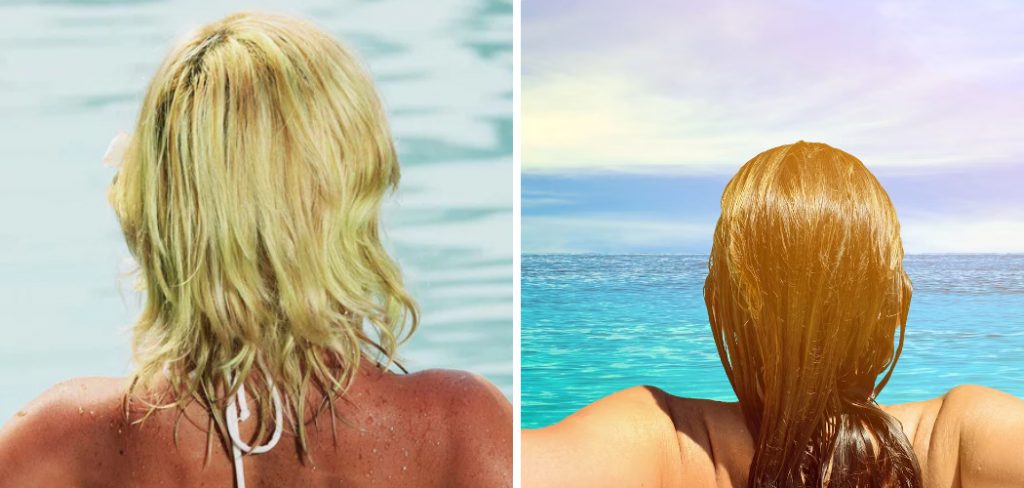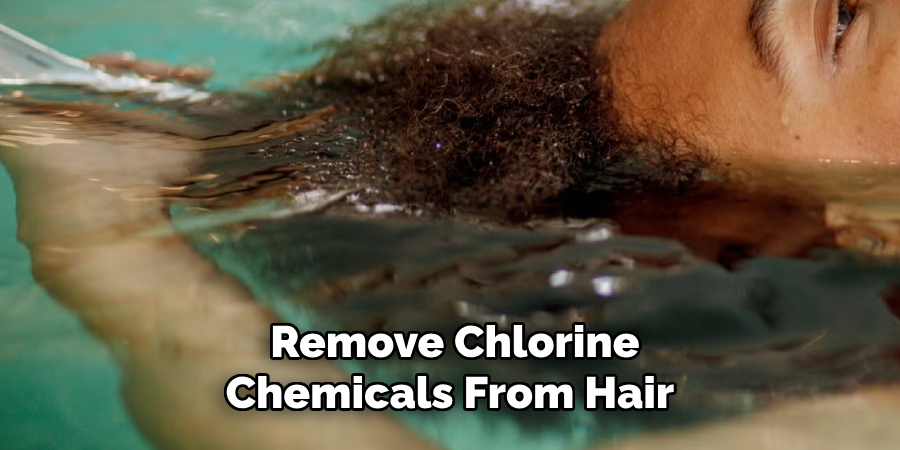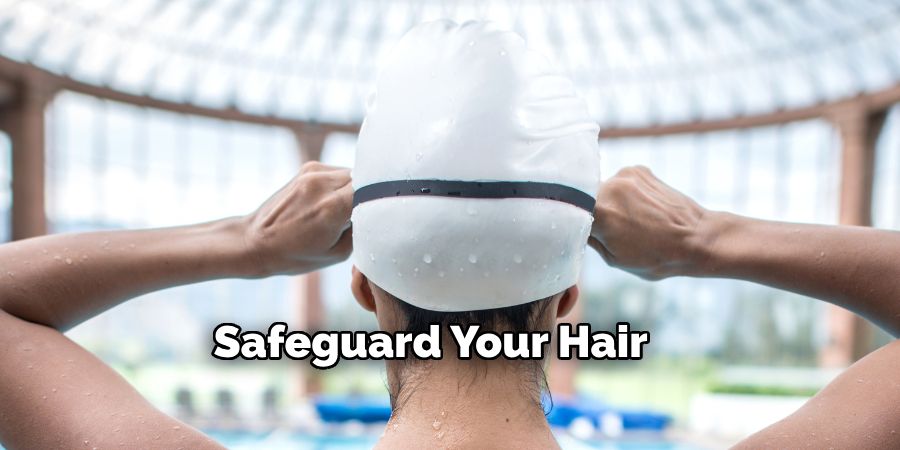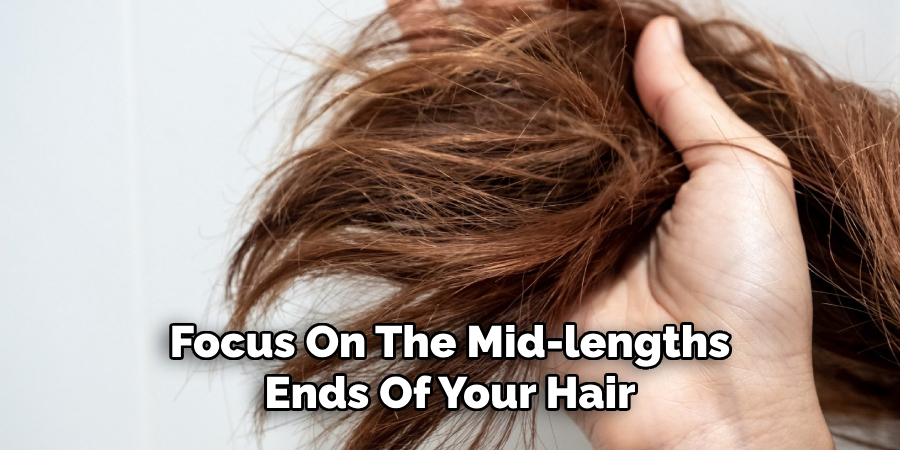Are you a swimmer tired of dealing with the dreaded “swimmer’s hair” after every dip in the pool? Chlorine can be harsh on your hair, leaving it dry, brittle, and discolored. However, you can take several simple steps to fix swimmers’ hair and restore your locks to their former glory.
Swimming is a fantastic exercise and recreation, but it can take a toll on your hair. The constant exposure to chlorine, saltwater, and sun can leave your locks dry, brittle, and prone to damage. If you are battling the frustrating effects of “swimmer hair,” worry not!

This article will provide you with practical tips and remedies on how to fix swimmers hair. Say goodbye to dryness and hello to healthy, lustrous locks!
What Are the Benefits of Swimming for Your Hair?
Before diving into the remedies for swimmers’ hair, it’s essential to understand the benefits of swimming for your hair. Contrary to popular belief, swimming can have positive effects on your locks.
- Promotes Healthy Blood Flow: Swimming increases blood circulation to your scalp, which nourishes and strengthens your hair follicles.
- Cleanses Your Scalp: Chlorine acts as a disinfectant in pools, effectively cleansing your scalp and removing any buildup of dirt or oil.
- Natural Exfoliator: Saltwater from the ocean has natural exfoliating properties that can remove dead skin cells from your scalp, promoting healthy hair growth.
- Lowers Stress Levels: Exercise, including swimming, helps reduce stress levels, which can improve the overall health of your hair.
These benefits make swimming an excellent activity for maintaining healthy hair.
What Will You Need?
To fix swimmers’ hair, you will need a few essential items:

- Clarifying Shampoo: This type of shampoo is formulated to remove chlorine and other chemicals from your hair.
- Deep Conditioning Treatment: Look for a deep conditioning treatment containing natural ingredients like coconut or argan oil to nourish and repair your locks.
- Leave-In Conditioner: A leave-in conditioner can provide extra hydration and protection for your hair throughout the day.
- Swim Cap: If you are an avid swimmer, investing in a high-quality swim cap can significantly reduce the amount of chlorine and saltwater that comes into contact with your hair.
- Wide-Tooth Comb: A wide-tooth comb is gentle on wet hair and can help detangle any knots without causing damage.
Once you have these items, you are ready to start fixing your swimmer’s hair!
8 Easy Steps on How to Fix Swimmers Hair
Step 1. Pre-Swim Care:
Before heading into the pool or ocean, it is essential to take some pre-swim precautions to minimize the damage caused by chlorine or saltwater to your hair. Follow these steps:
- Wet your hair: Start by wetting your hair thoroughly with clean water. This will help minimize chlorine or saltwater absorption into your hair strands.
- Apply a protective leave-in conditioner: Before swimming, apply a leave-in conditioner designed for swimmers. This will create a barrier between your hair and the water, providing extra protection against the harsh chemicals.
- Wear a swim cap: If possible, wear a swim cap to further protect your hair from prolonged exposure to chlorine or saltwater. A swim cap can significantly reduce the amount of water that comes into contact with your hair, helping to minimize damage.
- Rinse your hair immediately after swimming: After your swim rinse your hair thoroughly with clean water to remove any residual chlorine or saltwater. This will help to minimize the drying and damaging effects of these substances on your hair.
Following these pre-swim care steps can help safeguard your hair and minimize the negative effects of chlorine or saltwater exposure.

Step 2. Clarify Your Hair:
Chlorine and salt water can strip your hair of its natural oils, leaving it dry and brittle. To remove these chemicals, use a clarifying shampoo that is specifically designed for swimmers. Follow these steps:
- Wet your hair: Start by wetting your hair thoroughly with warm water.
- Apply the clarifying shampoo to your scalp and gently massage it into your hair strands.
- Rinse and repeat: Rinse out the shampoo thoroughly and repeat this process once more to ensure all residual chlorine or saltwater is removed.
Step 3. Deep Conditioning Treatment:
After clarifying your hair, it’s essential to replenish the lost moisture and nutrients. A deep conditioning treatment can help repair and hydrate your strands, restoring their softness and shine. Follow these steps for an effective treatment:
- Choose the right conditioner: Select a deep conditioner or hair mask that contains nourishing ingredients like coconut oil, shea butter, or argan oil.
- Apply generously: After shampooing, apply the deep conditioner to your damp hair, focusing on the mid-lengths and ends where the most damage occurs.
- Massage into your hair: Gently massage the conditioner to ensure even coverage. Avoid applying directly to the roots, as this can cause buildup.
- Leave it on: Follow the product instructions for how long to leave the treatment on. Generally, 10-15 minutes is sufficient to nourish your hair deeply.
- Rinse thoroughly: Rinse out the conditioner with cool or lukewarm water to seal the hair cuticles and lock in moisture.
Deep conditioning treatments should be done at least once a week if you swim frequently to maintain your hair’s health and resilience.
Step 4. Hydration with Leave-In Conditioner:
After showering, use a leave-in conditioner to provide continuous hydration and protection throughout the day. This product is beneficial for preventing dryness and frizz caused by environmental factors. Here’s how to apply it:

- Towel-dry your hair: Gently pat your hair with a towel to remove excess water without causing damage. Avoid rubbing your hair, as this can lead to breakage.
- Apply the leave-in conditioner: Take a small amount of it and evenly distribute it through your damp hair, concentrating on the ends.
- Detangle with a wide-tooth comb: Use a wide-tooth comb to spread the product and detangle any knots evenly.
Using a leave-in conditioner regularly keeps your hair smooth, shiny, and manageable, making it a vital step in your post-swim routine.
Step 5. Air-Dry Your Hair:
After applying the leave-in conditioner, it’s best to let your hair air-dry naturally. This method is much gentler on your strands than heat styling, which can further damage weakened hair. Here are some tips for air-drying:
- Avoid rubbing with a towel: Rubbing wet hair with a towel can cause friction and lead to breakage. Instead, gently squeeze excess water from your hair using a soft microfiber cloth or an old t-shirt.
- Don’t brush wet hair: Brushing wet hair can also cause damage as it is more prone to breakage when wet. Let your hair dry at least 50% before using a brush or comb.
- Avoid tying your hair up: Tying your wet hair into a ponytail or bun can also cause breakage. Letting it hang loose is the best option.
Step 6. Use Hair Oils for Extra Nourishment:
Consider incorporating hair oils into your post-swim routine if you have dehydrated and damaged hair. These highly concentrated oils contain essential fatty acids that deeply nourish and repair damaged strands. Follow these steps for optimal results:
- Choose the right oil: Some popular options include coconut oil, argan oil, jojoba oil, or olive oil. Make sure to choose one that suits your hair type and needs.
- Apply sparingly: Using too much oil can weigh down your hair and make it look greasy. Start with a small amount, gradually increasing if needed.
- Apply to damp hair: Apply the oil to damp, towel-dried hair for better absorption and distribution.
- Avoid applying on roots: Focus on the mid-lengths and ends of your hair, as these areas tend to be drier and more prone to damage.
- Style as desired: You can leave the oil in or rinse it out, depending on your preference. If you choose to leave it in, style your hair as usual. If you prefer rinsing it out, wait at least 30 minutes before shampooing and conditioning as normal.

Step 7. Use a Wide-Brimmed Hat:
In addition to following these post-swim hair care steps, it’s also important to take preventive measures. Wearing a wide-brimmed hat while swimming can help protect your hair from the harmful effects of chlorine and saltwater. It also provides protection against UV rays from the sun, which can further damage your hair.
Step 8. Keep Up with Regular Hair Trims:
Even with a proper post-swim hair care routine, keeping up with regular trims every 8-12 weeks is important. This helps remove split ends or damaged hair, promoting healthy and hydrated growth. It also prevents the damage from spreading further up the hair shaft, keeping your locks looking and feeling their best.
These tips and tricks allow you to maintain strong, shiny, healthy hair even after swimming in chlorinated or saltwater pools.
Conclusion
Taking care of your hair after swimming is crucial to prevent damage, dryness, and breakage.
By following these steps on how to fix swimmers hair, you can keep your locks healthy and hydrated while enjoying a refreshing swim. Remember to choose the right products suitable for your hair type and needs and continue with regular trims to maintain strong and beautiful strands. With proper care, you can rock your favorite summer hairstyle without worrying about the damaging effects of chlorine or saltwater.
So go ahead and dive in, knowing that you have the knowledge to protect your hair afterward! Happy Swimming!
About the Author
Jane Hubbard is a passionate beauty expert with a wealth of experience in makeup, hair, and overall beauty techniques. After years of working as a hairdresser specialist, she followed her entrepreneurial spirit and started her own consultancy business.
Jane has always been driven by her desire to help others feel confident in their own skin, and she does this by sharing her knowledge, experiences, and practical beauty tips. Through her consultancy, she empowers individuals to embrace their unique beauty, offering tailored guidance that boosts both self-esteem and personal style.
Professional Focus
- Specializes in makeup, hairstyling, and beauty consulting.
- Provides personalized beauty advice, tips, and techniques to help individuals feel confident in their appearance.
- Dedicated to staying up-to-date with the latest industry trends and developments.
- Passionate about creating a comfortable and empowering experience for every client.
Education History
- University of Craft and Design – Bachelor of Fine Arts (BFA) in Woodworking and Furniture Design
- Woodworking Apprenticeships – Extensive hands-on training with skilled craftsmen to refine carpentry and furniture making techniques
- Online Courses & Masterclasses – Continued education in advanced woodworking techniques, design principles, and specialized tools
Expertise:
- Makeup artistry, hairstyling, and beauty consulting.
- Personalized beauty techniques to enhance confidence and self-expression.
- Educating clients on how to maintain their beauty routines at home.
